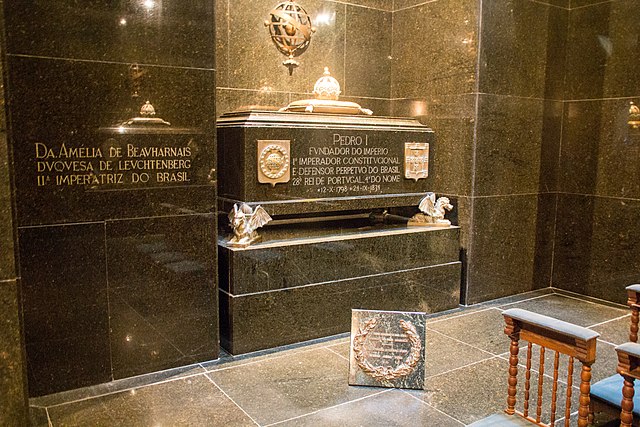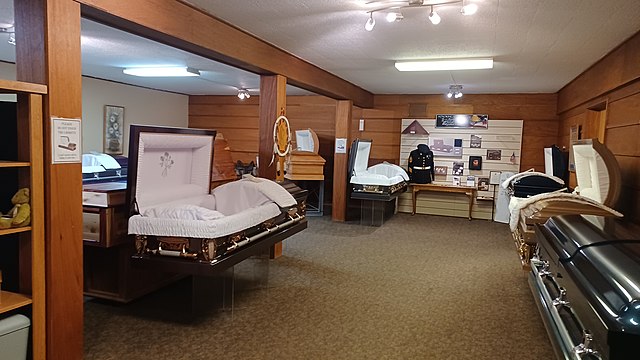A sarcophagus is a coffin, most commonly carved in stone, and usually displayed above ground, though it may also be buried. The word sarcophagus comes from the Greek σάρξ sarx meaning "flesh", and φαγεῖν phagein meaning "to eat"; hence sarcophagus means "flesh-eating", from the phrase lithos sarkophagos, "flesh-eating stone". The word also came to refer to a particular kind of limestone that was thought to rapidly facilitate the decomposition of the flesh of corpses contained within it due to the chemical properties of the limestone itself.
Roman sarcophagus with the myth of Medea, c. 140–150 AD, from Rome, exhibited in the Antikensammlung Berlin (Berlin)
Roman sarcophagus with Apollo, Minerva and the Muses, c. 200 AD, from Via Appia, exhibited in the Antikensammlung Berlin
The Gothic sarcophagi of Don Àlvar Rodrigo de Cabrera, count of Urgell and his wife Cecília of Foix, c. 1300–1350, made of limestone, traces of paint, exhibited in the Metropolitan Museum of Art (New York City)
The graves of Emperor Pedro I of Brazil (also King of Portugal as Pedro IV) and his second wife Amélie (left) in the Monument to the Independence of Brazil. The grave of the King-Emperor's first wife, Maria Leopoldina, is on the opposite side, facing his grave.
A coffin is a funerary box used for viewing or keeping a corpse, either for burial or cremation.
A shop window display of coffins at a Polish funeral director's office
A casket showroom in Billings, Montana, depicting split lid coffins.
Ancient Egyptian coffin, 1802–1640 BC
Coffin of prince Liu Wu, covered with jade panels. China, 154 BC








